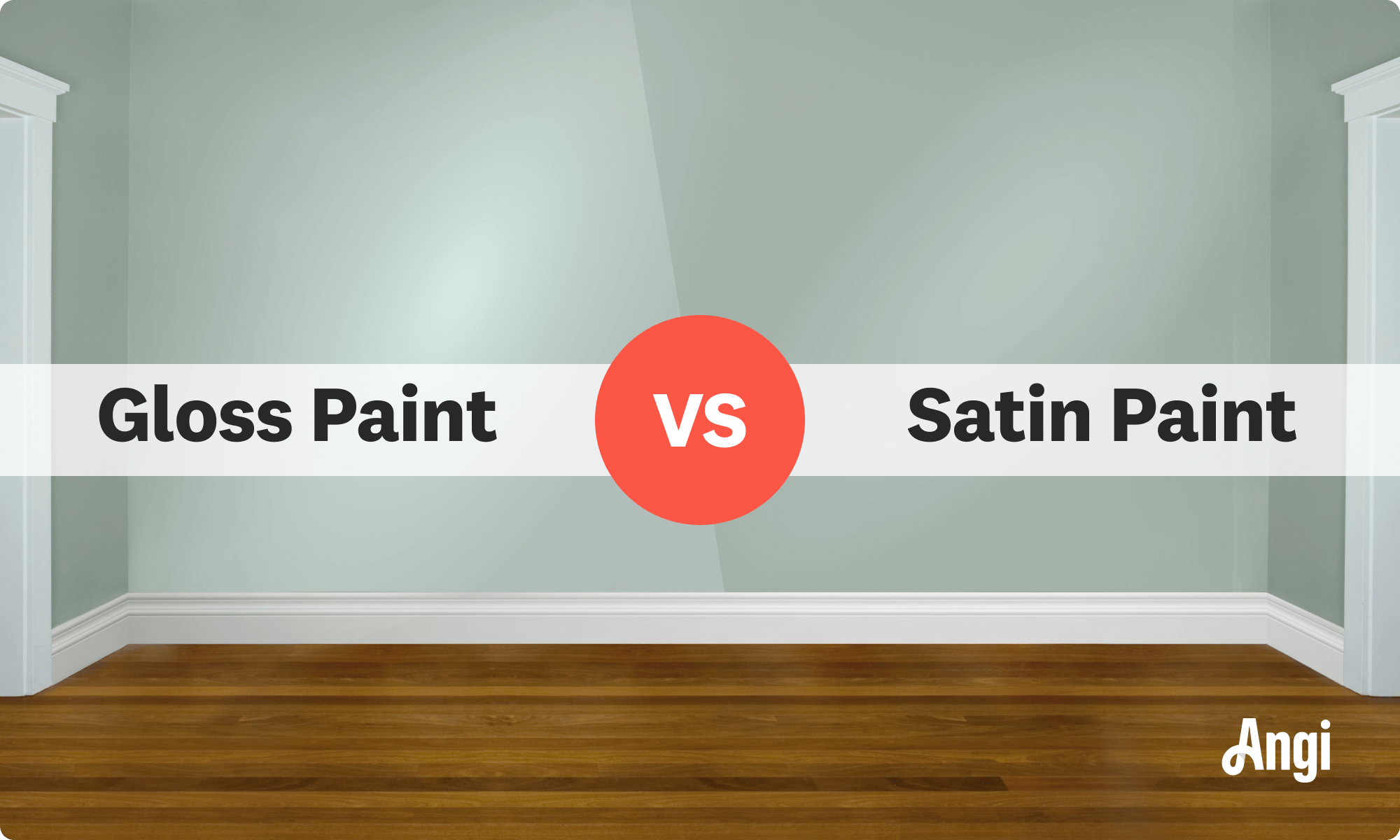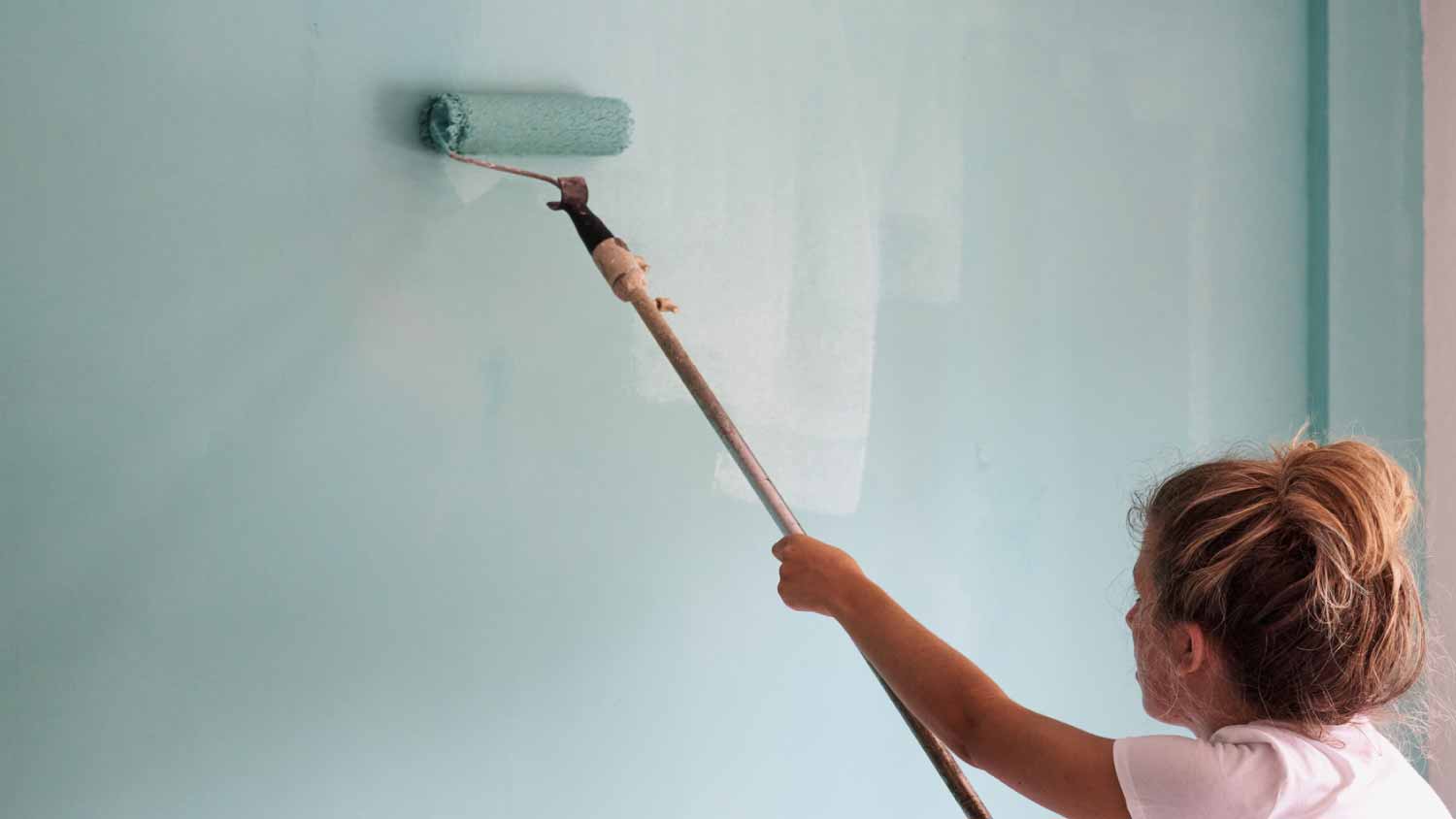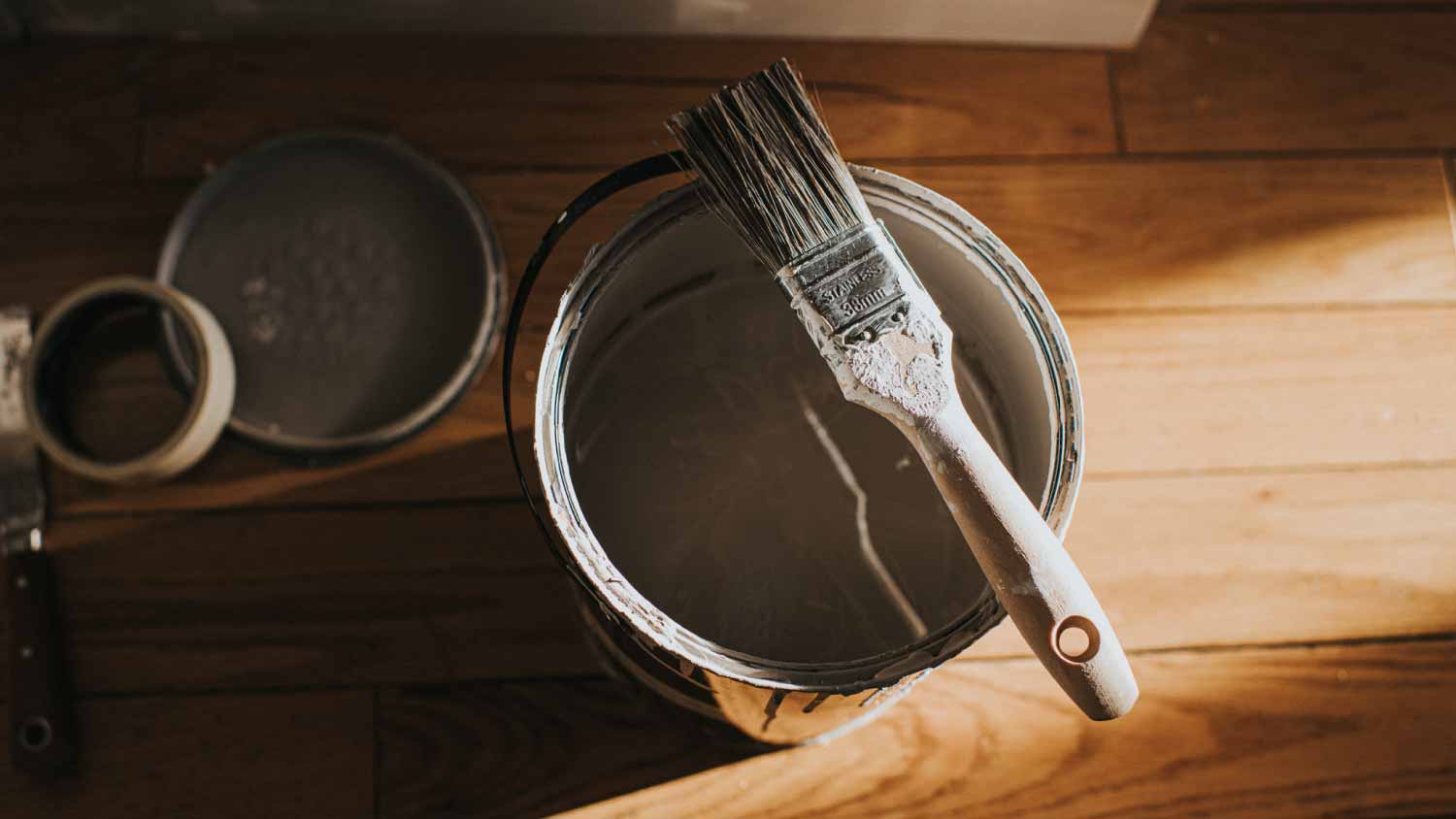
The cost to paint the interior of a house in Raleigh, NC depends on size, layout, type of surface, and more. Learn what factors can influence your total in this guide.
You’ve got to pick the right finish before you can get started


The main difference between gloss and satin paint is the level of sheen.
Gloss paint has a thicker, protective consistency that creates a reflective effect.
Satin isn’t as flat as matte, but it’s nowhere near as shiny as gloss.
Whether you’re planning to paint a wall or give a facelift to your favorite wooden chair, it’s never quite clear which type of paint finish to pick. Take gloss versus satin paint, for instance. One isn’t necessarily better than the other, but their differences can determine where and when you use each. Get to know the pros and cons of these two popular interior paint options so you can choose correctly every time.

The biggest difference between gloss and satin paint is the paint's sheen. The former is so shiny that it’s reflective, which can be an ideal way to illuminate dark spaces but may also bring greater attention to flaws on your walls or in your paint job. Satin is much flatter but not as flat as matte. It has a subtle luster that adds dimension wherever it’s applied, but to a much lesser degree than gloss, which also helps it more easily conceal imperfections, like fingerprints or dents.

When talking about gloss paint, it’s important to remember that there are two main kinds: semi-gloss and high gloss. As its name would suggest, the latter is about as shiny as a paint can get, whereas the former is slightly more subdued, though still much shinier than satin. For the purposes of this guide, we mean high-gloss when talking about gloss paint.
| Pros | Cons |
|---|---|
| Easy touch-ups and cleaning | Not ideal for high-traffic areas |
| Highly durable | Can be too reflective |
Best for:
Repainting small to medium-sized wood furnishings for a refresh.
Individual walls or window or door frames in low-traffic areas.
The higher the level of gloss in a paint, the more durable it tends to be. That means that high gloss paint is among the most long-lasting options for interior coloring. It won’t scuff as easily as satin and is relatively easy to touch up. All that gloss also provides the added bonus of moisture resistance, which means you can clean a paint like this with a bit of soap and water without the risk of ruining it.
Gloss paint doesn’t exactly hide or mask flaws that were already there. Its reflective nature will draw attention to faults, new and old, which is why you’ll want to keep it out of high-traffic zones where fingerprints are likely to pile up. What’s more, its high reflectivity may not be ideal for some spaces or certain projects. If used to paint an entire room, for instance, it may be overwhelming.
Oil-based paints contain higher volatile organic compounds (VOCs) than latex paints. To limit your exposure to VOCs while painting indoors, keep the area well-ventilated, wear respiratory protection, and avoid the painted area for at least 72 hours once finished.

Satin paint falls in the middle of the gloss spectrum. It’s shinier than matte and eggshell paints but not as brilliant as semi- or high-gloss, basically making it the Goldilocks of interior paint finishes. This medium-ground luster also means it’s better suited to hiding small defects and creating more balanced, less reflective spaces.
| Pros | Cons |
|---|---|
| Better hides imperfections | Harder to touch up and clean |
| More versatile | Lower durability |
Best for:
Painting an entire room or space.
High-traffic areas.
Despite its subtle sheen, satin paint is relatively muted, and applying it to a wall with a handful of small scratches or dents won’t call attention to these issues. Similarly, satin paint won’t illuminate a dark space in the same way a high-gloss option will, but it is a good and balanced fit in rooms that already get a lot of natural light. In fact, satin paint is more versatile across the board and can be used to paint anything from entire rooms to small, medium, and large furnishings.
Satin paint doesn’t leave visible brush strokes when first applied like gloss might, but touch-ups made down the line will stand out—so it’s better to repaint entirely than attempt a quick fix. In that same vein, there’s a higher possibility you’ll need to repaint sooner with an option like this because of its lower durability. It may not emphasize pre-existing dents, but it won’t protect your walls from future ones either.
Now that you’re more familiar with where each of these two paint types stand, here’s how they stack up against each other in the most important categories.
Satin wins this round for its unmatched versatility, but which one has a better appearance comes largely down to preference and your particular setup. Those in darker, enclosed spaces may swear by gloss over satin for its, for example.
This type of paint has built-in security from scuffs, dents, and fading thanks to the protection offered by its high gloss content.
Gloss is easier to clean because it’s moisture-resistant and easier to patch up, clinching the maintenance category.
Gloss looks great if you hire an interior painter near you to apply it, or if you’re an experienced DIYer who knows what it takes. Without proper attention and technique, you may end up with visible, uneven brush strokes that are a costly pain to fix. Alternatively, satin paint’s brush strokes aren’t easily visible, and its lower sheen leaves a lot more room for error, making it a good DIY even for beginners.
While there’s not a huge difference in cost between the two types of paints, satin is slightly less expensive, and—since it’s easier to DIY—may mean you can save on the cost of hiring a pro by opting for it.
From average costs to expert advice, get all the answers you need to get your job done.

The cost to paint the interior of a house in Raleigh, NC depends on size, layout, type of surface, and more. Learn what factors can influence your total in this guide.

The cost to paint the interior of a house in Austin, TX depends on size, layout, type of surface, and more. Learn what factors can influence your total in this guide.

The cost to paint the interior of a house in Detroit, MI depends on size, layout, type of surface, and more. Learn what factors can influence your total in this guide.

Deciding on an overall color scheme for the interior of your house is stressful. Going through the process? Here are the best white wall and trim color combinations.

Tired of your neutral-colored concrete countertops? Paint them for a fun DIY project that will totally transform your kitchen.

When selecting the best paint for garage walls and ceilings, consider aesthetics, durability, ease of cleaning, and conditions in the space.